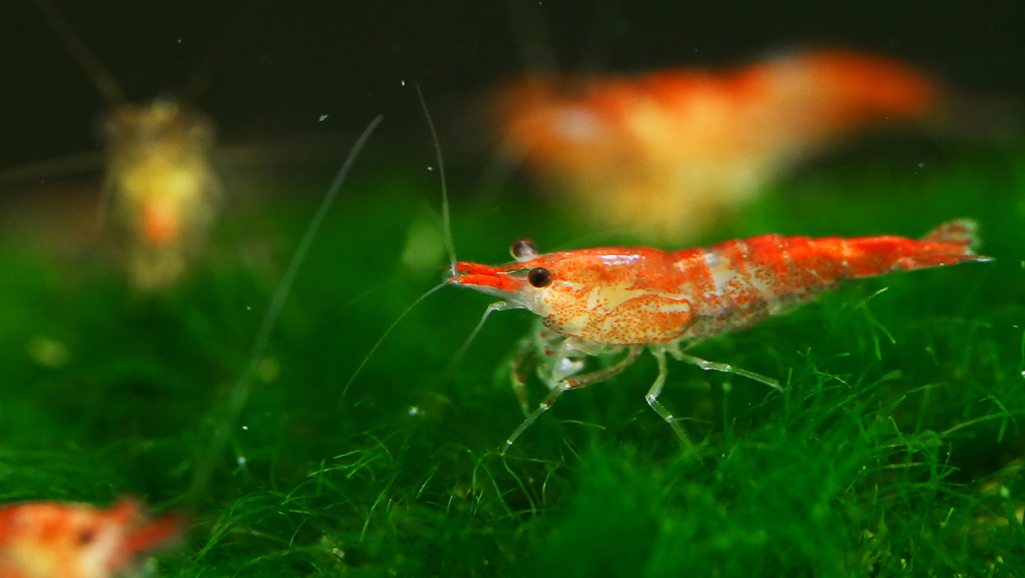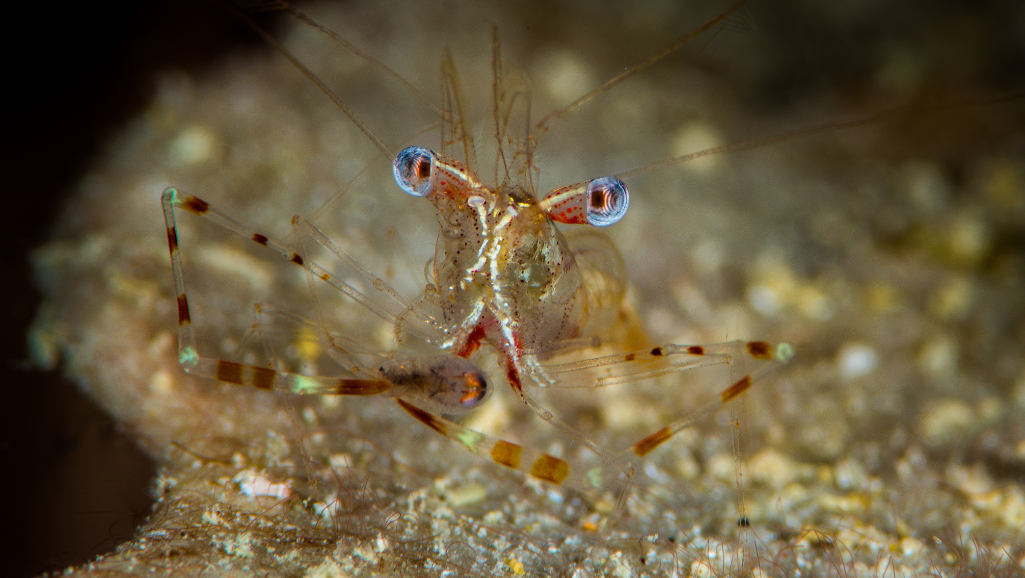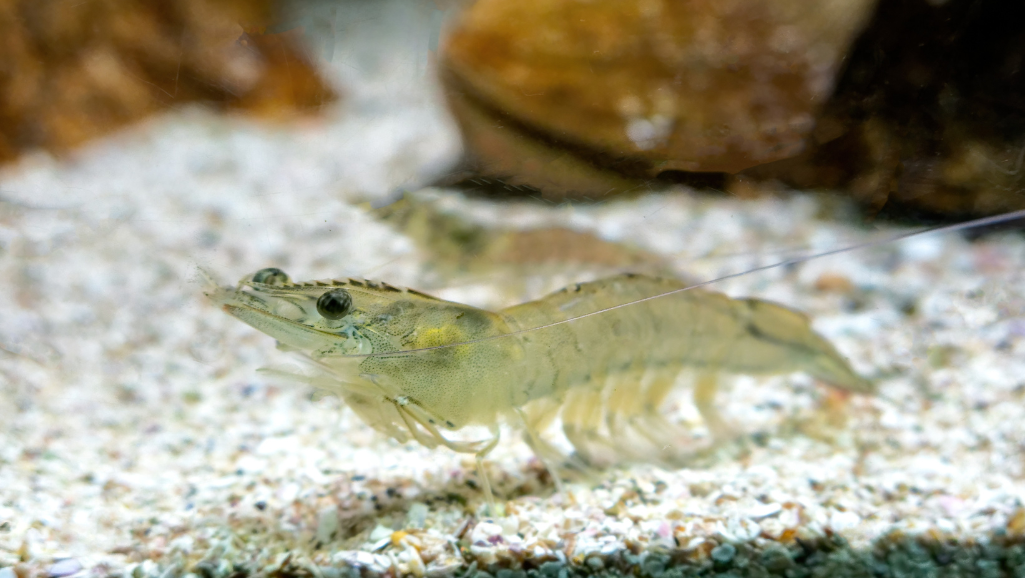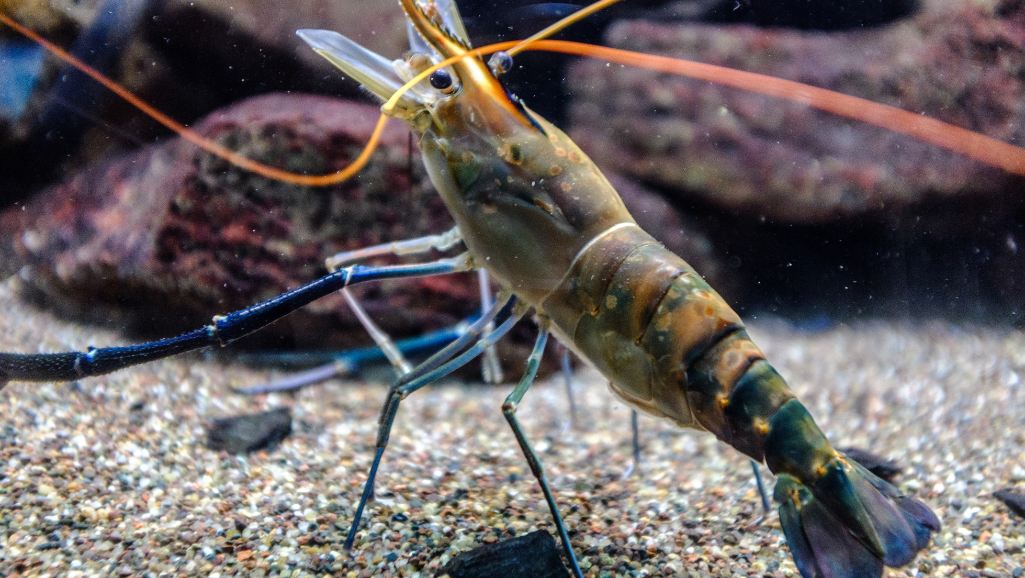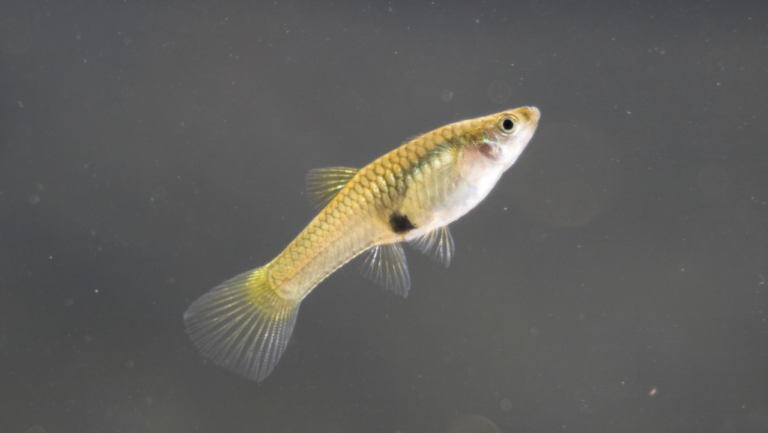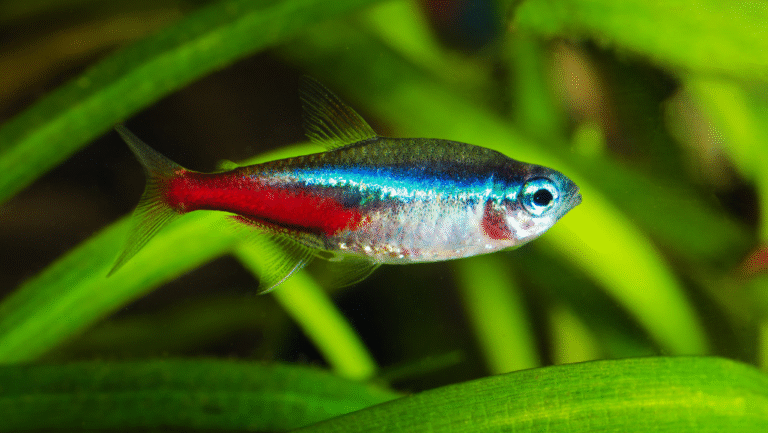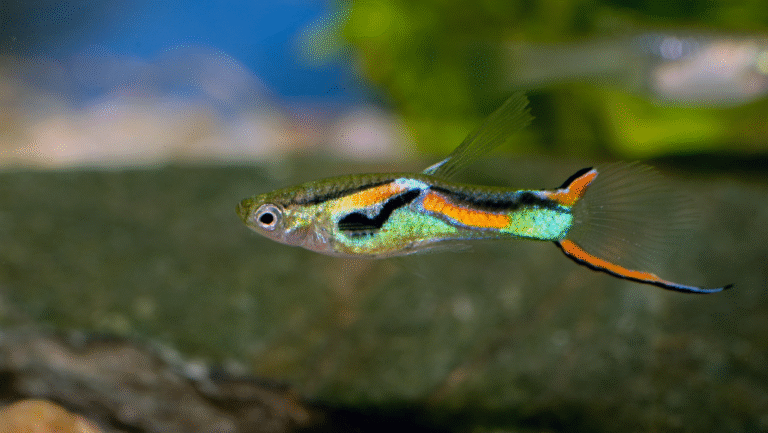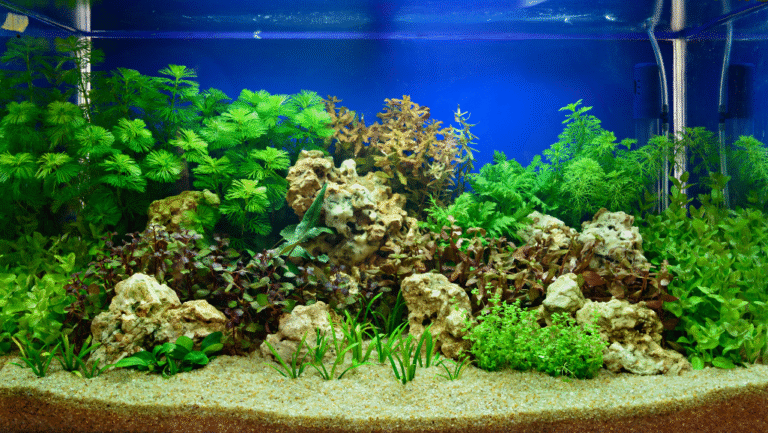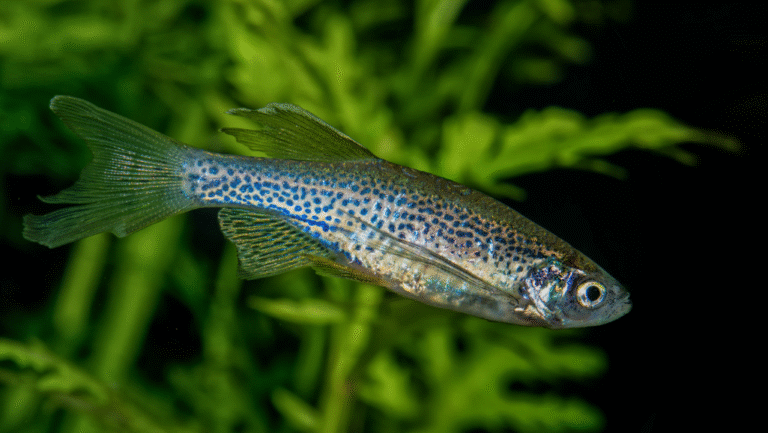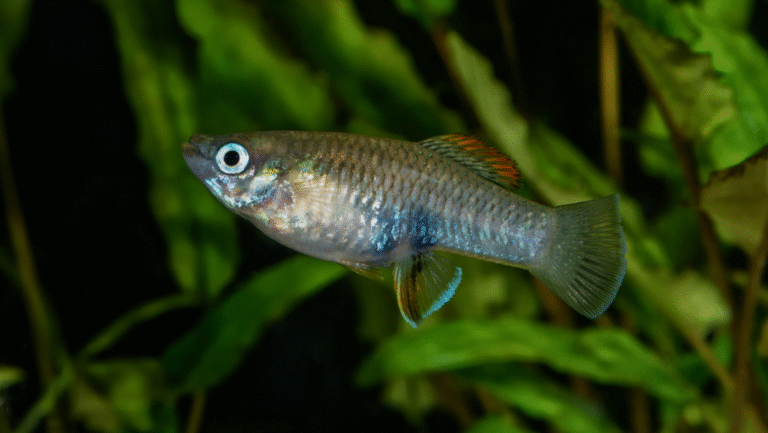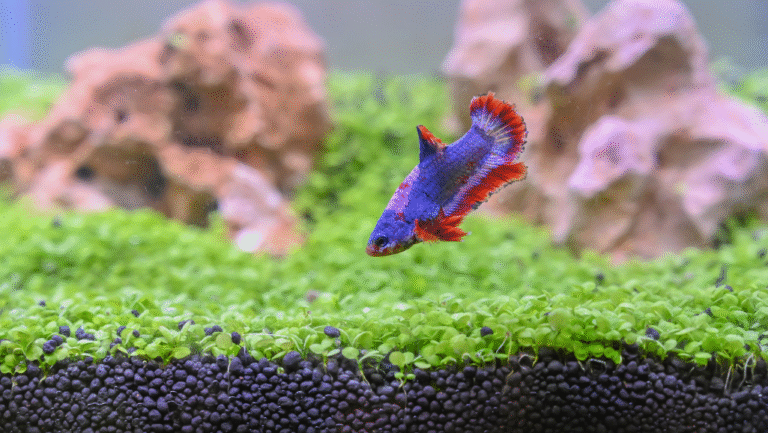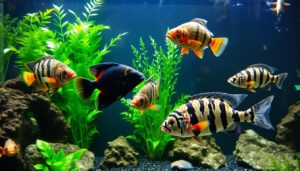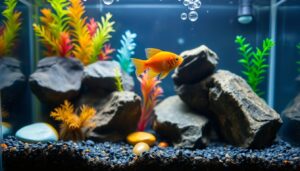Dive into the magical world of Bamboo Shrimp and discover their peaceful charm. These freshwater wonders come from Southeast Asia’s lush streams. They bring tranquility and unique beauty to any aquarium.
Their fan-like appendages make them fascinating to watch. They use these to catch food, adding to their charm. This makes them a great choice for aquarium lovers.
Key Takeaways
- Average lifespan of 1 to 2 years ensures a meaningful time with these serene creatures.
- Ideal tank size for each Bamboo Shrimp is 20 gallons to provide ample swimming space.
- Specific water conditions, such as a temperature of 70°F to 78°F, are vital for their well-being.
- A diet of microorganisms shows the importance of high-quality filter feeding.
- Sensitivity to water conditions and copper toxicity underscores the need for careful tank management.
- Regular monitoring is essential, given their susceptibility to changes in water parameters.
Essential Bamboo Shrimp Habitat Requirements
Creating a great home for Bamboo Shrimp is key to their health. Knowing their natural habitat in Southeast Asia helps us set up a better Bamboo Shrimp tank setup. Let’s look at what makes a good home for these interesting creatures.
Understanding Tank Size and Space Needs
Bamboo Shrimp need lots of room to feed and grow. A tank of at least 20 gallons is a must. But, tanks up to 40 gallons are even better for them. This size gives them space to act naturally and stay healthy.
Optimal Water Parameters for Health and Longevity
Keeping the right Bamboo Shrimp water parameters is very important. The water should be between 71 to 82 degrees Fahrenheit. The pH level should be 6.5 to 7.5, and the hardness should be 6-10 dGH. This keeps the water just right for them.
It’s also important to check and adjust these levels often. This helps prevent stress and sickness. For more tips on keeping the water perfect, check out this helpful guide.
The Importance of Current and Filtration
Good water flow and strong filtration are key for Bamboo Shrimp. They feed on the water flow, so a strong current is essential. Also, make sure there’s no copper in the water, as it’s harmful to them.
Decor and Planting: Mimicking a Natural Environment
Adding lots of plants and decorations is a big plus. Live plants help clean the water and give the shrimp places to hide. This makes them feel safe and relaxed.
Using plants, caves, and driftwood creates areas where the shrimp can feed and rest. This setup is like their natural home.
Creating a great home for Bamboo Shrimp is important for their health. A well-kept tank meets their needs and is fun to watch.
Creating a Nutritious Bamboo Shrimp Diet
For those who care for Bamboo Shrimp, creating a balanced diet is crucial. It ensures their health and long life. Knowing their natural feeding habits helps you keep them healthy.
The Filter Feeder’s Menu: What Bamboo Shrimp Eat
Bamboo Shrimp feed on tiny organisms and fine organic matter. In the wild, they use currents to catch their food. To feed them well, use powdered spirulina, daphnia, or brine shrimp.
Supplemental Feeding: Techniques and Recommendations
- Turn off the filter but keep the pump running during feeding. This spreads the food evenly.
- Use a pipette to add food near their spots. This mimics the natural flow of water.
- Change the water weekly, 8-10 gallons, to keep it clean. This is important because of their diet.
Maintaining Dietary Balance for Growth and Vitality
Offering a varied diet meets their nutritional needs and encourages natural behavior. Add live or frozen foods like microworms and frozen daphnia. Live foods help mimic their natural environment, improving their health.
To keep Bamboo Shrimp thriving, replicate their natural food abundance. A rich, varied diet is essential for their health and natural behavior in your aquarium.
Behavior and Social Aspects of Bamboo Shrimp
Learning about Bamboo Shrimp behavior is key for anyone wanting to add them to their aquarium. These shrimp are known for being calm and peaceful Bamboo Shrimp. They show interesting behaviors that are both fun to watch and good for the tank.
Bamboo Shrimp are mostly active at night. They use their fan-like appendages to catch food particles in the water. This way of eating is not only interesting to see but also helps keep the tank clean.
- Bamboo Shrimp like to sit on high spots in the tank to catch food better.
- They hide in plants or decorations during the day. They come out more when it’s dark.
These shrimp get along well with other species. Their peaceful nature makes them great friends for many non-aggressive fish and shrimp. This creates a peaceful tank for everyone.
Because of their gentle nature, Bamboo Shrimp are often considered a keystone species in the community tanks, contributing to the ecosystem’s balance by filtering out detritus and uneaten food.
To keep Bamboo Shrimp happy, it’s important to create a habitat like their natural one. This means lots of plants and a gentle flow. They do best in water between 68-85°F and a pH of 6.5-7.5, which is similar to their home in Southeastern Asia.
If you’re thinking of getting these calm creatures, make sure your tank is right for them. Good water quality, the right temperature, and a peaceful tank are all important. This helps them stay healthy and happy, making them a wonderful addition to your aquarium.
Even though Bamboo Shrimp behavior is mostly calm, they still need a well-kept environment to do well. Regular water changes and enough space are crucial. Also, make sure there are plenty of places for them to hide and feel safe.
Bamboo Shrimp Breeding Insights
For those interested in Bamboo Shrimp breeding, knowing their needs is key. Breeding them is rewarding and helps your aquarium’s ecosystem. We’ll look at how to create the best environment for their reproduction and care for their young.
Fostering an Environment for Reproduction
To encourage Bamboo Shrimp breeding, a stable environment is vital. They need a setup that looks like their natural home, with lots of hiding spots and steady water. Also, gentle currents help spread food, which they eat by filtering it.
It’s important to note that while iodine helps with molting, it’s not needed for breeding. Bamboo Shrimp can live for one to two years. With the right care, they can live longer and breed better.
Caring for Bamboo Shrimp Larvae
Caring for larvae is crucial. They are very sensitive to changes in their environment. There can be 75-100 larvae at a time, and about 30% may not survive when moved.
It’s important to move them slowly over 3-7 days to help them adjust. This careful transition is key to their survival. Feeding them live marine phytoplankton is also important. It helps them grow strong and increases their chances of survival.
By understanding and managing breeding conditions, aquarists can successfully raise Bamboo Shrimp. Creating a good environment and caring for the larvae boosts breeding success. This helps keep your aquarium healthy and sustainable.
Conclusion
Bamboo Shrimp turn your freshwater aquarium into an enchanting underwater haven. They add beauty and show your tank is healthy. These invertebrates can grow up to 3-4 inches and need a tank of at least 20 gallons to thrive.
They are easy to care for, making them great for both new and experienced aquarists. A balanced diet and clean water are key to their health. The ideal water has a pH of 6.5 to 7.5 and a temperature of 72°F to 82°F.
Watching them molt is a sign of their health. Bamboo Shrimp prefer to live in small groups. This allows you to see their peaceful interactions. Breeding them is challenging but rewarding for those who want to learn about their life cycle.
Keeping Bamboo Shrimp healthy requires patience and attention. They need places to hide after molting and regular checks for diseases. With proper care, they can live for 1-2 years or more.
As you watch your Bamboo shrimp, you’ll see the joy they bring to your aquarium. They add tranquility to the underwater world you’ve created.
